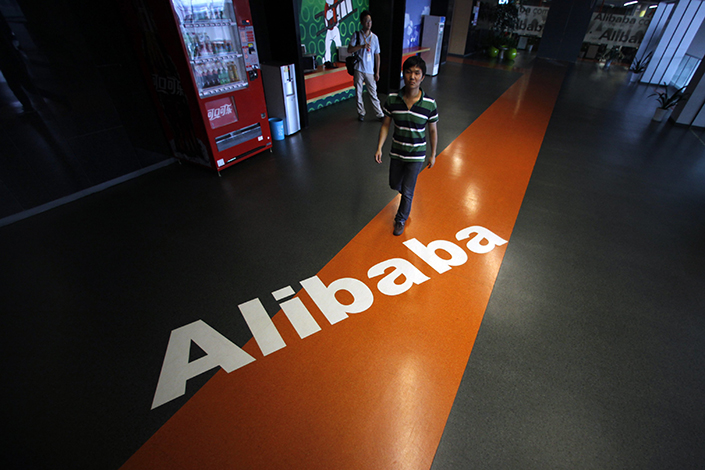RBC GLOBAL ASSET MANAGEMENT (ASI bought a fresh place in Alibaba Group Holding Limited (NYSE:BABA). The institutional investor bought 588.0 thousand shares of the stock in a transaction took place on 4/30/2020. In another most recent transaction, which held on 6/04/2020, IRISH LIFE INVESTMENT MANAGERS L bought approximately 331.2 thousand shares of Alibaba Group Holding Limited In a separate transaction which took place on 4/30/2020, the institutional investor, GOLDMAN SACHS ASSET MANAGEMENT I bought 251.1 thousand shares of the company’s stock. The total Institutional investors and hedge funds own 48.20% of the company’s stock.
In the most recent purchasing and selling session, Alibaba Group Holding Limited (BABA)’s share price decreased by -1.45 percent to ratify at $236.51. A sum of 16470972 shares traded at recent session and its average exchanging volume remained at 19.00M shares. The 52-week price high and low points are important variables to concentrate on when assessing the current and prospective worth of a stock. Alibaba Group Holding Limited (BABA) shares are taking a pay cut of -1.65% from the high point of 52 weeks and flying high of 55.75% from the low figure of 52 weeks.
Alibaba Group Holding Limited (BABA) shares reached a high of $241.30 and dropped to a low of $236.13 until finishing in the latest session at $241.01. Traders and investors may also choose to study the ATR or Average True Range when concentrating on technical inventory assessment. Currently at 6.30 is the 14-day ATR for Alibaba Group Holding Limited (BABA). The highest level of 52-weeks price has $240.48 and $151.85 for 52 weeks lowest level. After the recent changes in the price, the firm captured the enterprise value of $643.05B, with the price to earnings ratio of 29.70 and price to earnings growth ratio of 9.20. The liquidity ratios which the firm has won as a quick ratio of 1.90, a current ratio of 1.90 and a debt-to-equity ratio of 0.17.
Having a look at past record, we’re going to look at various forwards or backwards shifting developments regarding BABA. The firm’s shares rose 9.99 percent in the past five business days and grew 7.72 percent in the past thirty business days. In the previous quarter, the stock rose 20.39 percent at some point. The output of the stock increased 9.17 percent within the six-month closing period, while general annual output gained 40.40 percent. The company’s performance is now positive at 11.51% from the beginning of the calendar year.
Tupperware Brands Corporation (TUP) shares on Tuesday’s trading session, jumped 6.13 percent to see the stock exchange hands at $6.23 per unit. Lets a quick look at company’s past reported and future predictions of growth using the EPS Growth. EPS growth is a percentage change in standardized earnings per share over the trailing-twelve-month period to the current year-end. The company posted a value of -$0.65 as earning-per-share over the last full year, while a chance, will post $2.00 for the coming year. The current EPS Growth rate for the company during the year is -93.80% and predicted to reach at 93.62% for the coming year. In-depth, if we analyze for the long-term EPS Growth, the out-come was -43.00% for the past five years and the scenario is totally different as the current prediction is 12.00% for the next five year.
The last trading period has seen Tupperware Brands Corporation (TUP) move -66.90% and 441.74% from the stock’s 52-week high and 52-week low prices respectively. The daily trading volume for Tupperware Brands Corporation (NYSE:TUP) over the last session is 3.88 million shares. TUP has attracted considerable attention from traders and investors, a scenario that has seen its volume jump 12.39% compared to the previous one.
Investors focus on the profitability proportions of the company that how the company performs at profitability side. Return on equity ratio or ROE is a significant indicator for prospective investors as they would like to see just how effectively a business is using their cash to produce net earnings. As a return on equity, Tupperware Brands Corporation (NYSE:TUP) produces 13.10%. Because it would be easy and highly flexible, ROI measurement is among the most popular investment ratios. Executives could use it to evaluate the levels of performance on acquisitions of capital equipment whereas investors can determine that how the stock investment is better. The ROI entry for TUP’s scenario is at 5.80%. Another main metric of a profitability ratio is the return on assets ratio or ROA that analyses how effectively a business can handle its assets to generate earnings over a duration of time. Tupperware Brands Corporation (TUP) generated -2.40% ROA for the trading twelve-month.
Volatility is just a proportion of the anticipated day by day value extend—the range where an informal investor works. Greater instability implies more noteworthy benefit or misfortune. After an ongoing check, Tupperware Brands Corporation (TUP) stock is found to be 11.77% volatile for the week, while 12.90% volatility is recorded for the month. The outstanding shares have been calculated 48.90M. Based on a recent bid, its distance from 20 days simple moving average is 21.81%, and its distance from 50 days simple moving average is 58.56% while it has a distance of -8.90% from the 200 days simple moving average.
The Williams Percent Range or Williams %R is a well-known specialized pointer made by Larry Williams to help recognize overbought and oversold circumstances. Tupperware Brands Corporation (NYSE:TUP)’s Williams Percent Range or Williams %R at the time of writing to be seated at 6.09% for 9-Day. It is also calculated for different time spans. Currently for this organization, Williams %R is stood at 6.09% for 14-Day, 38.06% for 20-Day, 28.88% for 50-Day and to be seated 25.62% for 100-Day. Relative Strength Index, or RSI(14), which is a technical analysis gauge, also used to measure momentum on a scale of zero to 100 for overbought and oversold. In the case of Tupperware Brands Corporation, the RSI reading has hit 64.46 for 14-Day.

